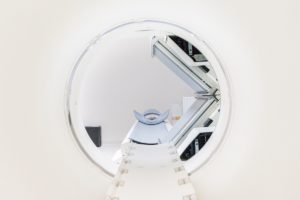In today’s evolving healthcare environment, staying at home no longer means sacrificing quality care. Advancements in medical imaging and the expansion of home care services are bridging the gap between diagnosis and day-to-day support, making it easier for patients to take care of their health without frequent hospital visits. Whether recovering from surgery, managing a chronic illness, or ageing in place, patients now have more ways than ever to access care and stay informed from the comfort of home.
Healthcare providers are increasingly focused on personalised care models that prioritise both outcomes and experience. As hospital systems face growing demand, shifting certain services into the home has become a practical and patient-friendly solution. With the support of trained professionals and mobile technology, patients can now receive high-level monitoring, early diagnosis, and timely intervention in familiar surroundings.

A key component of this shift is remote diagnostic capability. Portable imaging tools, such as handheld ultrasound devices and mobile X-ray units, allow clinicians to assess a patient’s condition without requiring travel to a clinic. This has been particularly beneficial for elderly patients or those with limited mobility, as well as individuals living in rural or regional areas where specialist facilities may not be readily accessible.
For many patients, the home care journey begins with an initial diagnosis or hospital discharge. From that point forward, regular check-ins and updates are critical to track progress and avoid complications. In the past, this meant frequent appointments, often creating stress for both patients and carers. Today, coordinated care teams can use digital imaging and remote monitoring to keep updated on the patient’s condition while reducing unnecessary travel or waiting time.
These advances are also improving clinical decision-making. With access to real-time imaging and clear data, healthcare providers can make informed recommendations more quickly. For example, a patient recovering from a fracture can have their healing progress monitored through imaging at home, reducing the need for multiple outpatient visits. Similarly, someone managing a long-term respiratory condition can receive lung scans and oxygen monitoring without stepping outside.
But this transformation isn’t only about technology—it’s about relationships. Home care professionals, including nurses, allied health workers, and support staff, build trust with patients by understanding their routines, preferences, and goals. When diagnostics and treatments are integrated into this care model, it creates a holistic approach that respects both medical needs and personal lifestyle.
Communication plays a central role in this approach. Patient portals, telehealth consultations, and shared digital records make it easier for care teams to collaborate and keep everyone on the same page. Patients benefit by staying informed about their health, understanding their treatment plans, and being empowered to make choices that reflect their values.
Education is also key. Many providers now offer in-home education sessions, helping patients and families interpret test results, manage medications, or respond to symptoms effectively. This builds confidence and supports self-management, especially for those with chronic or complex conditions.
There’s also a growing awareness of mental wellbeing as part of the home care model. Staying in a familiar environment decreases stress and supports emotional health, particularly for individuals dealing with long-term illness or palliative care. When diagnostics can be done at home, patients feel more at ease, and that peace of mind contributes to overall recovery and resilience.
Cost-effectiveness is another important factor. Reducing the need for hospital-based diagnostics can lower healthcare expenses for both patients and the broader system. Fewer emergency visits, shorter hospital stays, and improved prevention all contribute to more sustainable care. At the same time, patients avoid the indirect costs of travel, parking, and time off work or caregiving.
Still, the success of this model depends on careful planning and professional oversight. Not all conditions can be managed at home, and safety must remain a top priority. That’s why leading providers invest in staff training, robust safety protocols, and partnerships with diagnostic specialists. The goal is not to replace traditional care entirely but to extend its reach in ways that are thoughtful, safe, and meaningful.
As technology continues to change, so will the possibilities. Artificial intelligence is already being used to interpret imaging results faster and with greater accuracy. Wearable health monitors are becoming more precise, feeding data directly to care teams. In the near future, we may see even more seamless integration between home-based care and specialist support, allowing for earlier detection and more personalised intervention.
For families, this shift provides reassurance. Knowing that precious ones are being cared for at home, with access to skilled professionals and timely information, reduces the emotional and logistical burden. It also fosters a sense of involvement, as families are often present during visits and can participate more actively in care planning.
Ultimately, helping patients stay home and stay informed is about restoring dignity and control. It means allowing people to recover, manage, or age in a space that feels safe and familiar—without losing access to the expertise and insights that modern healthcare provides. It’s a model built not just on convenience, but on compassion and confidence.
As demand for flexible care continues to grow, this combined approach—merging diagnostics, home-based support, and proactive communication—will become an essential part of healthcare delivery. By investing in tools, training, and technology that prioritise people and outcomes, we can create a future where care meets people where they are, without compromise.

